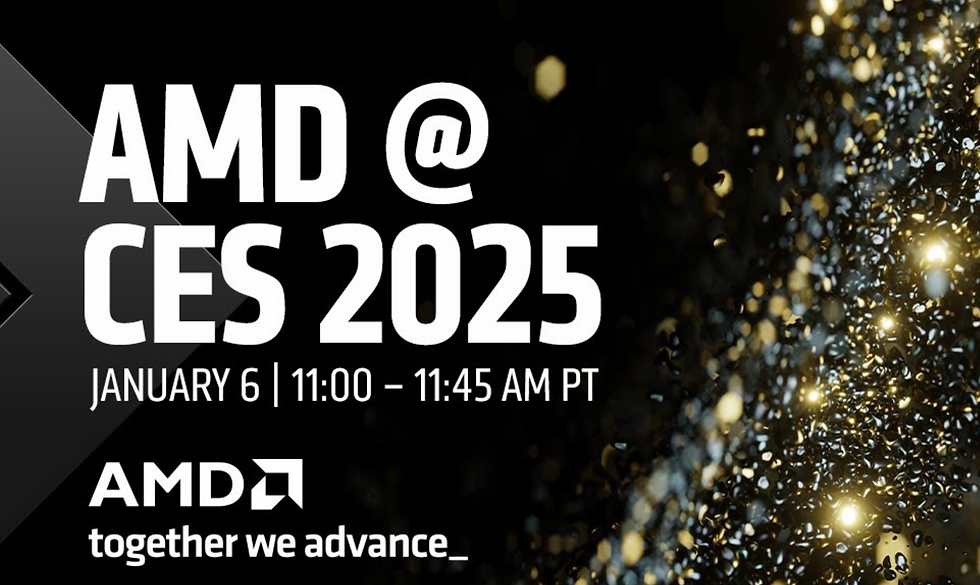Why the AMD RX 9070 is the Sleeper Hit of 2025 – Forget the XT!
- Anu R.

- Mar 5
- 4 min read
Updated: Mar 8
The AMD Radeon RX 9070 is shaping up to be a major steal, and honestly, it might just overshadow the RX 9070XT. AMD’s latest GPU launch has brought two new graphics cards to the table, the RX 9070 and the RX 9070XT. While the spotlight has largely been on the 9070XT, the 9070 has been somewhat overlooked. In this article, I’ll dive deep into the AMD RX 9070 and explore why it deserves more attention.
AMD has been dominating the processor market, especially with their X3D chips like the 9800X3D, 7800X3D, and 9900X3D, which have set new standards in the high-end desktop segment. However, when it comes to graphics cards, AMD has often lagged behind their biggest competitor, NVIDIA. But this time, with the RX 9070 and 9070XT, AMD is stepping up their game. From what we’ve seen in the briefings and presentation slides, AMD is bringing their A-game to NVIDIA’s territory, tackling Ray Tracing and Frame Generation head-on. This is a bold move, and while many expected AMD to falter, it seems they might just pull it off this time. I’m genuinely captivated by what AMD is promising, and I think you will be too.

AMD’s presence is undeniable across consoles, handheld devices, and mobile computing. But when it comes to GPUs, they’ve had their share of disappointments. However, this time feels different. The RX 9070 and 9070XT are set to launch on March 6th, and this article will focus on the RX 9070. Let’s take a closer look at the specifications.

The RX 9070 is based on the Navi 48 architecture and features 56 AMD RDNA 4 compute units, 56 Ray Tracing accelerators, 112 AI accelerators, and a peak AI performance of 1165 TOPS. It has a boost clock of 2.52 GHz, 16GB of onboard memory, and a total board power rating of 220W. In comparison, the RX 9070XT has a higher power rating of 304W, with some AIB manufacturers pushing it even further.

Speaking of AIB partners, it’s worth noting that MSI is absent from the list of AMD Radeon card manufacturers due to a terminated agreement. However, given the performance of the 90 series, MSI might reconsider their stance. As an MSI fan, I certainly hope so.

During the product briefing, AMD shared some compelling slides. The RX 9070 is claimed to be 38% faster than the RX 6800XT and 26% faster than the RTX 3080. Both the RX 6800XT and RTX 3080 were priced at $649 and $699 respectively at launch. While I won’t discuss the pricing of the RX 9070 just yet, it’s important to keep those numbers in mind. The performance results shown here are native, not related to MFG or Ray Tracing unless specified.
Comparing the RX 9070 to the RX 7900GRE, which was a solid card for AMD, the RX 9070 shows a 21% improvement at 4K Ultra Resolution settings across a 30-game average. At 1440p, another popular resolution, the RX 9070 outperforms the RX 7900 GRE by 20% in native performance and Ray Tracing. I won’t delve into how it stacks up against NVIDIA cards just yet—stay tuned for the in-depth review.
One of the standout features of the RX 9070 is its frame generation and upscaling capabilities. NVIDIA has DLSS and MFG, but AMD counters with FSR, FMF, Radeon Boost, Anti-Lag, and more. The focus here is on FSR, FMF, and the relatively new AMD HYPR-RX.
In high-refresh 4K gaming, the RX 9070 with FSR and AMD HYPR-RX delivers a significant FPS boost, sometimes tripling the average frame rate. While I can’t comment on potential input lag or artifacting, the results are impressive. FSR (Fidelity Super Resolution) and FMF (Fluid Motion Frames) are two key technologies. FSR competes with DLSS and requires game developers to integrate it into their games. FMF, on the other hand, operates on the driver side, allowing frame generation and upscaling for games without FSR or DLSS. For example, in Apex Legends, enabling FMF can double the frame rate from 203 FPS to over 400 FPS. This is all managed through the AMD Adrenaline Studio Software.

AMD HYPR-RX combines FSR, FMF, Radeon Boost, Anti-Lag, and Super Resolution into a single, driver-side solution. This means game developers don’t need to tweak their games for these features to work. Simply enable HYPR-RX in the Adrenaline Suite, and you’re good to go.

In terms of pricing, the RX 9070 is rumored to outperform the RTX 3080, RX 6800XT, and RX 7900GRE, all of which were priced above $600 at launch. AMD has announced a suggested retail price of $550 for the RX 9070 and $600 for the RX 9070XT. However, AIB partners may price their models higher, depending on the features and branding. Personally, I’d opt for the base value card within the MSRP range, rather than paying extra for brands like Asus. My top choices for Radeon cards would be Sapphire, PowerColor, and XFX, and I’d even consider trying out Acer’s offerings.
That wraps up this article. Stay tuned for the in-depth review, where we’ll take a closer look at the Sapphire Pure AMD Radeon RX 9070.











Comments